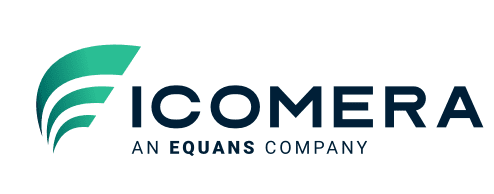A record-breaking 450 transit technology and innovation officers met in Denver, Colorado for the 2022 American Public Transportation Association APTAtech Conference to discuss the latest challenges facing the public transit industry today.
And with challenges came opportunities and optimism that filled the floor.
The Challenge
The technology challenges of today look quite different than they did at the last in-person APTAtech Conference in 2019. Three years ago, the loudest conversations spoke of “getting back to basics” with best practices, interdepartmental collaboration, and ROI.
Today’s challenges in a post-COVID world include disrupted supply chains, chipset shortages, workforce dilemmas, procurement obstacles, but with an overwhelmingly optimistic view of the future.
“Our job collectively is to reposition the industry, reposition our organizations– whether it’s on the public side to deliver services and attract riders, or from the business supplier side putting out the products and services that are going to be available to the agencies to deliver those improvements,” said APTA President and CEO Paul Skoutelas.
To do this, the challenge is rapidly developing and adopting modern technologies with limited resources and maintaining cohesive results across the industry. Working together and building upon each other’s successes would help.

The Opportunity
Ridership continues to climb back to normalcy and communities continue to revitalize. Our cities are depending on public transit to drive traffic to stores, shops, and services and bring needed patronage. To continue to drive new ridership in this transitional season, people need to know that public transit is different from what it has always been.
We are embracing technology and working to provide more information, options, and ease of operation for current and potential riders. These new innovations can contribute to more people choosing public transit as a favorable option. Communicating this innovation to our communities, as well as amongst agencies, will aid us in reshaping the wider perception of the transit industry, it is the ease of use and applicability to potential riders. As innovation builds, communication must continue. Communities need to hear how their regional transit networks are evolving. As an industry, we must communicate innovation to our communities to build more transit champions and advocates.
Skoutelas remarked: “We are at the beginning of a technological revolution in transit that will continue to change how we serve the public … and how the public values our services.”
Programs such as the Denver Regional Transportation District’s (RTD) “Zero Fare for Better Air” program offers free fares across their transit systems and a fantastic opportunity for residents and tourists alike to try out services they otherwise might not.
The RTD transit terminal is directly connected to the airport, allowing for a seamless passenger experience along the A-Line downtown, quickly, and easily at no cost. Upon arrival at downtown’s Union Station, bus stops are conveniently located for the last mile to the destination. Denver’s transit outlook is a positive one with an easily navigable and accessible system.

The Collective Call to Action
How can we better share what is proven successful in our technology efforts?
Information sharing was a key theme throughout the conference. Agencies like AC Transit in California are taking initiative to support wider adoption of the technologies they have worked on, posting on tech resource GitHub and other platforms. This is one approach to sharing developments but may require some customization for different agencies and varying adjacent technologies. For smaller agencies, this may be a challenge as they do not have resources for these kinds of development, nor the staff to maintain them.
Agencies are identifying areas to improve services to customers and developing creative solutions. Matthew Weidner of King County Transit demonstrated a new application, expanding data points in sidewalk accessibility. Weidner explained that a “yes or no” data entry is insufficient to indicate whether a sidewalk is passable for someone who is handicapped or has limited mobility. If walkways are obstructed or in severe disrepair, the presence of a sidewalk on the system map could be misleading, placing people in dangerous situations. King County is aggressively bringing more data together to make transit applications more complete and helpful to their clients.
The Tough Question
How can we simplify the technology research, decision-making, and investment process?
Simplifying the number of independent networks and non-integrated technology solutions aboard vehicles was another conference theme. A transit agency’s IT (Information Technology) supervisor identified six separate solution providers and another five separate systems also on board his vehicles.
Part of this can be blamed on segmented procurement activities and budgetary constraints, but not being aware of current technologies or opportunities for a cohesive strategy can also play a role.
“Innovation officers need to be part of the process, not separate from it,” says Molly Poppe of the Chicago Transit Authority (CTA).
Innovation needs to be embedded in the IT procurement process to ensure that interoperability is increasing, and agencies do not get boxed in due to lack of knowledge.

Playing Our Part
Tech solutions, such as those powered by Icomera, enable far greater efficiency for the onboard systems than through a segmented approach. By providing superior processing power and storage in a centralized and resilient connectivity platform, systems can be integrated to save valuable space, capital budget, and make the overall management less cumbersome.
More than ever before, the transit tech outlook is a united one – united in embracing data standards and specifications for our systems to create and sustain innovation.
Through the advancement of technology, we can alleviate some pain points in today’s transit systems and lay the groundwork for the future. The next era will be defined by how these innovations address passengers’ needs and provide sustainable solutions for an ever-changing environment.



